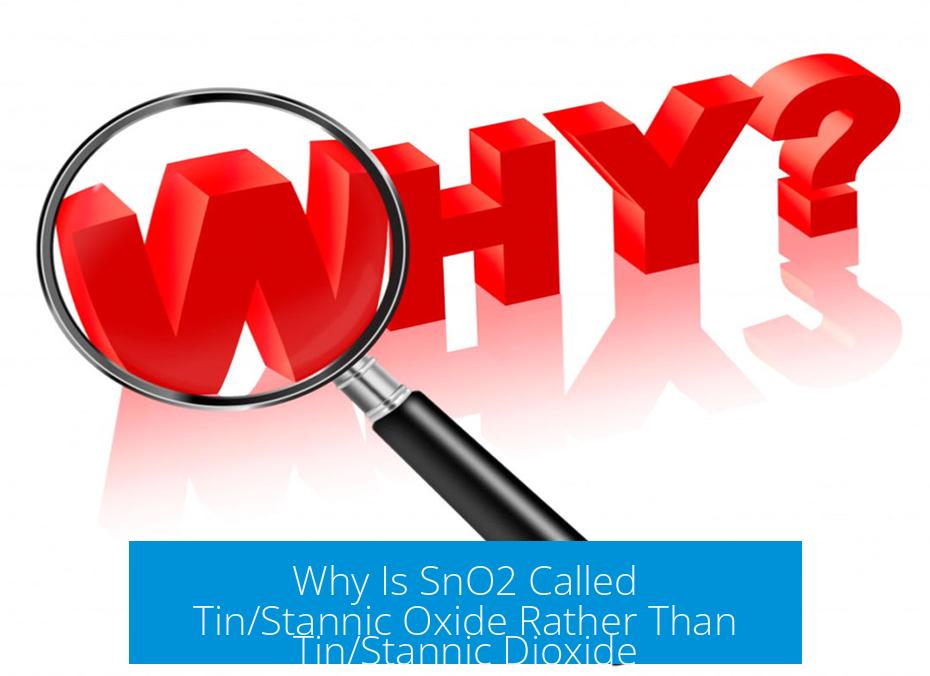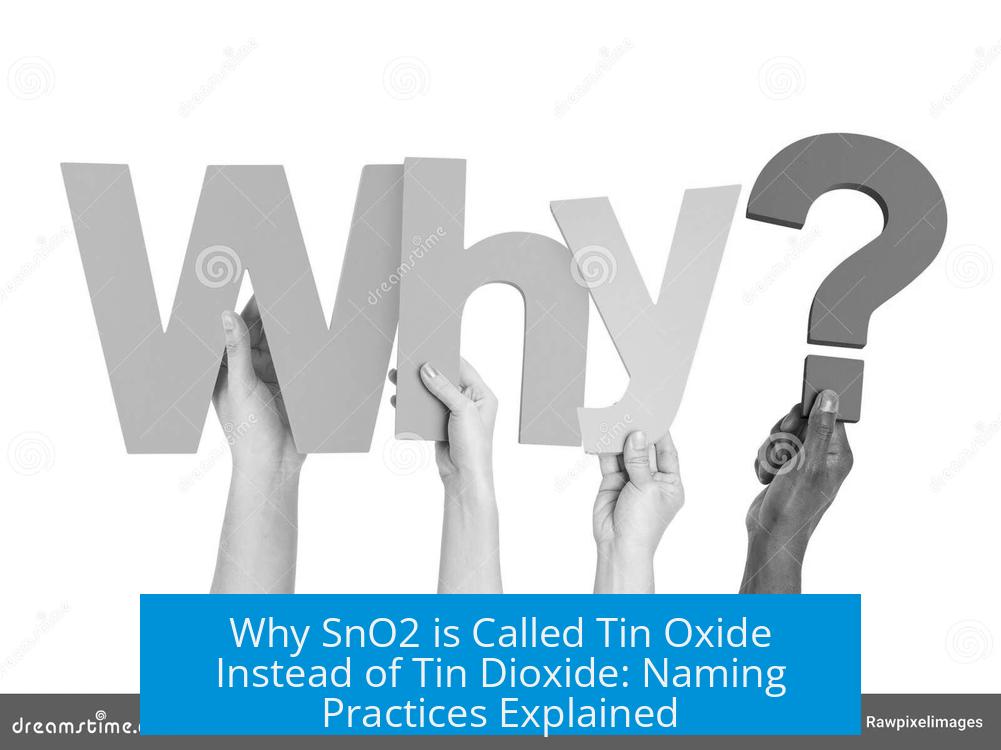Why Is SnO2 Called Tin/Stannic Oxide Rather Than Tin/Stannic Dioxide?

SnO2 is called tin or stannic oxide instead of tin or stannic dioxide because it is the most common oxide form of tin, involves tin in the +4 oxidation state balanced by oxide ions, and chemical naming conventions favor simplicity and clarity over literal numerical description.
Common Naming Practices
SnO2 is often simply called “tin oxide” or “stannic oxide” because it stands as the predominant oxide form of tin. Unlike carbon oxides, where carbon monoxide (CO) and carbon dioxide (CO2) both exist commonly and need distinct names, tin monoxide (SnO) is rare or seldom encountered. Therefore, the simpler name “tin oxide” typically refers to SnO2.
Chemical Charge Balance and Formula
Tin in SnO2 is in the +4 oxidation state, denoted as Sn4+. The oxide ion carries a -2 charge (O2-). Two oxide ions balance one Sn4+ ion, leading to the formula SnO2. Because the compound is electrically neutral, this balance underpins the name “stannic oxide.”
Oxidation State and Suffix Usage
- Tin commonly exhibits oxidation states of 0, +2, and +4.
- The +4 oxidation state corresponds to the “ic” suffix, making SnO2 “stannic oxide.”
- The tin(II) compound SnO uses the suffix “ous” (stannous oxide), but since SnO is uncommon, the “ic” suffix suffices for SnO2.
- Alternative names include tin(IV) oxide and tin dioxide, but shorter, simpler names dominate usage.
Summary of Naming Logic
| Aspect | Explanation |
|---|---|
| Dominant Oxide | SnO2 is the common oxide; SnO is rare. |
| Oxidation State | Tin is +4 in SnO2, balanced by two O2- ions. |
| Simplicity | Short names are preferred for ease and clarity. |
| Suffix Usage | “ic” indicates highest oxidation state, suitable for SnO2. |
Thus, the name “tin oxide” or “stannic oxide” effectively communicates the chemical nature without extra complexity. The name also aligns with established conventions that prioritize the most common forms and clear indication of oxidation state.
Key Takeaways
- SnO2 is the common and stable oxide of tin, unlike SnO.
- Tin is in the +4 oxidation state, balanced by two oxide ions.
- “Stannic oxide” names the compound with the highest oxidation state suffix “ic.”
- Short, clear names are preferred over literal numerical expressions.
Why is SnO2 called tin oxide instead of tin dioxide?
SnO2 is the most common oxide of tin. Since tin monoxide (SnO) is rarely seen, the shorter name “tin oxide” is used. This avoids confusion and keeps naming simple.
How does the charge balance explain the name stannic oxide?
The stannic ion is Sn4+. To balance its charge, two oxide ions (O2-) pair with one tin ion. This forms SnO2, called stannic oxide due to the charge balance.
Why is the suffix “ic” used in stannic oxide?
Tin’s highest oxidation state in oxides is +4. The “ic” suffix signals this highest state. Thus, SnO2 is called stannic oxide instead of stannous oxide.
Can SnO2 also be called tin dioxide?
Yes, tin dioxide is technically correct. But “tin oxide” or “stannic oxide” are preferred since SnO (monoxide) is uncommon. This simplifies naming conventions.
Is there a difference between stannic oxide and tin(IV) oxide?
No. Both refer to SnO2. “Stannic” means tin with +4 oxidation state, while tin(IV) oxide explicitly states the oxidation number.





Leave a Comment